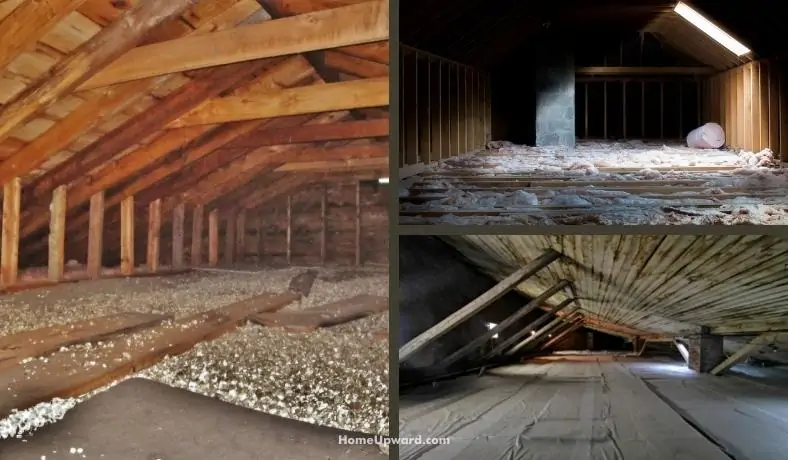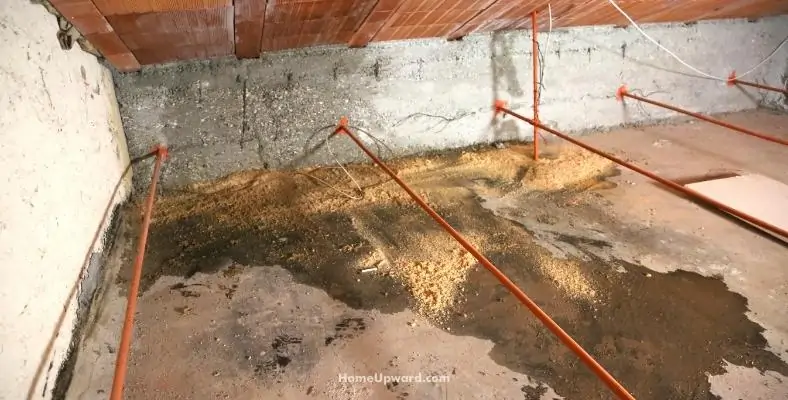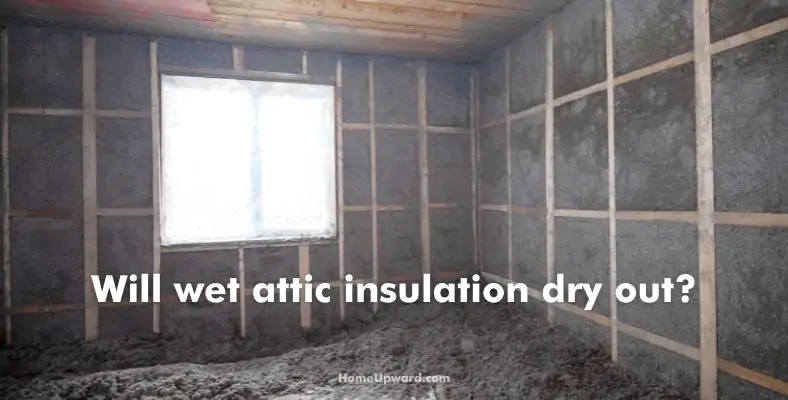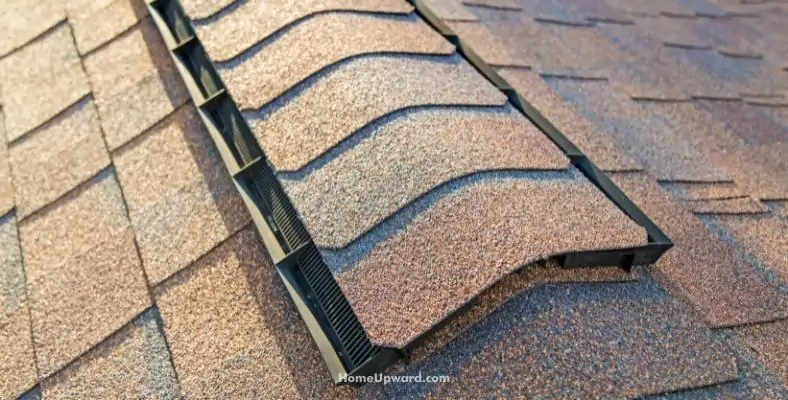Contents
Attic Condensation- Where it Comes From and What To Do
Why Does Attic Condensation Happen?
As it turns out, there are a lot of causes for an attic condensation problem. Condensation forms when warm, moist air comes into contact with a surface colder than itself.
When warm, moist air is trapped in your attic and comes into contact with the wood, condensation forms, leading to potential water damage if it continues to accumulate as water droplets.
Here are some of the most common reasons that happens.
1. Condensation in the Loft/Attic After Insulation Installation
If your house isn’t well ventilated after insulation gets installed attic moisture cannot escape which can lead to condensation. Ventilation in bathrooms should direct the damp air to the exterior of your house.
If vents direct the air elsewhere and it escapes into the attic, condensation can happen.
2. Wet Construction Material Drying Out
Many construction materials we use are made with water: for example cement, spackle, or other mixtures were water is added. When these materials dry out water is released into the air.
Without proper attic ventilation it can lead to condensation buildup.
3. Uninsulated Attics
On the other hand, an uninsulated attic can also have condensation issues. Without proper insulation, humid air can get in and result in condensation.
4. Poor Ventilation
Once there’s moisture in your attic, it needs to get out. Poor attic ventilation can result in trapped air. When this air is also damp, it can lead to condensation.
Although it’s also related to common roof leaks, poor ventilation is one reason water buildup can lead to mold or mildew also: the moisture in the air can’t escape and therefore creates the right environment for condensation and the problems that can come with it.
How Do You Treat Condensation in Your Attic?
While condensation can lead to issues the good news is that it’s treatable. The best way to treat it is to find its source and stop it. Even a burst pipe can lead to condensation and cause water damage.
If you can’t find the source, there are ways you can increase ventilation but keep in mind this can also further the moisture problem. Sealing off anywhere allowing air leakage can also help but it can raise the humidity.
Installing a vapor barrier will directly treat the moisture but not address the cause. A vapor barrier allows heat to stay in but moist air to get out.
Vapor barriers can be very helpful for moisture problems that have unknown causes or don’t have effective solution at the moment.
How Bad is Moisture For Loft and Attic Spaces?
Moisture in attic and loft spaces can be manageable for short periods but can cause numerous issues in the long run. Warm, moist air allows mold to grow in insulation and rot to form in wood both of which are expensive problems to fix.
And of course, mold can lead to health problems as it grows more and more, producing more and more spores you may inhale.
This issue is also hard to spot and may go unnoticed until noticeable damage occurs to your roof at which point it can end up costing a lot to fix.
Will Wet Attic Insulation Dry Out?
Wet insulation is a serious issue. It lowers its ability to insulate your house and drives up electricity costs. Whether the insulation will dry out or not once it’s wet depends.
If the insulation is too wet and its structure is already compromised you’ll need to replace any that’s been saturated. However, there are instances where you can dry your insulation out as long as its effective and not damaged by the water.
Fiberglass matt types tend to be ok if dried out thoroughly while others like cellulose insulation often are permanently ruined.
Fans or dehumidifiers can help get rid of excess moisture in the insulation in addition to manually pulling it out and letting it dry in the sun or using a fan to help pull moist air outside.
Will Roof Vents Prevent Condensation?
As mentioned above, roof vents can both help and hurt when it comes to a condensation issue. Roof vents can do wonders to remove excess moisture but they also tend to let in cooler air. That can worsen the problem when the moist air and cool air meet.
They work best when paired with other approaches too.
How Do You Know When You Need To Install Roof Vents?
You’ll know when to install roof vents in your attic space when too much condensation is forming. Inadequate ventilation can cause condensation but it can also worsen it if the root of the problem is different.
Regularly inspect your attic for signs of condensation which is usually found on wood beams that support the roof and make up walls. Like other attic problems, it’s best to catch the problem early.
You can do more to treat the early stages of condensation damage and are less likely to have to pay a large amount of money to fix issues that can happen once it’s past a certain point.





